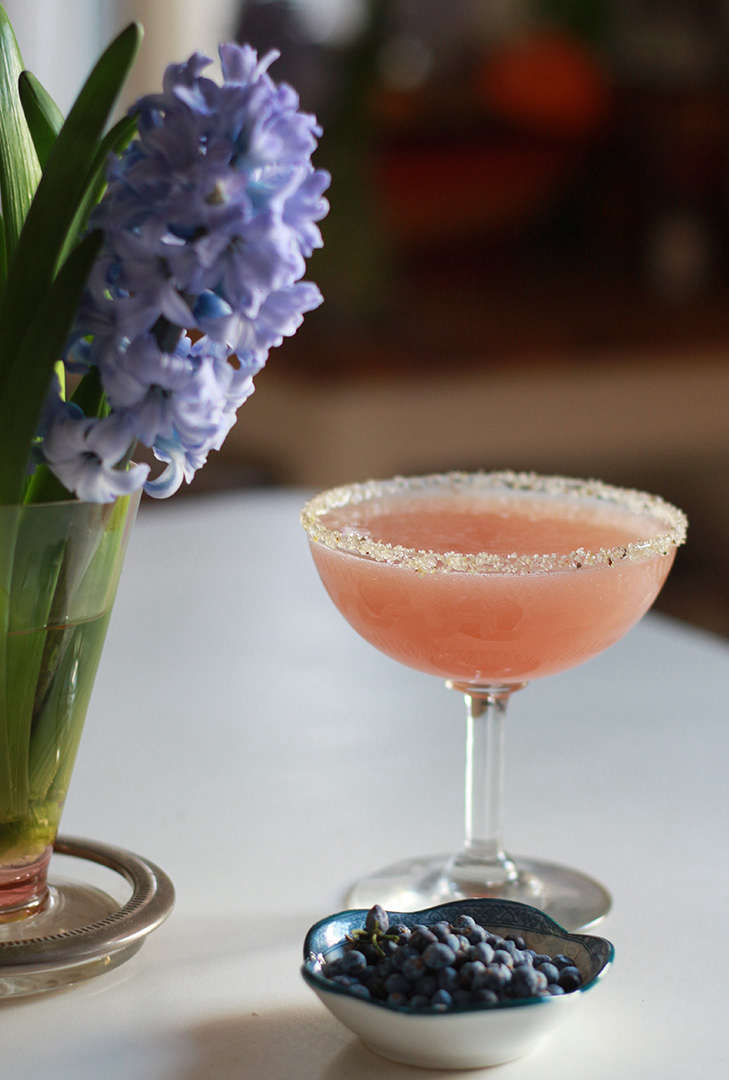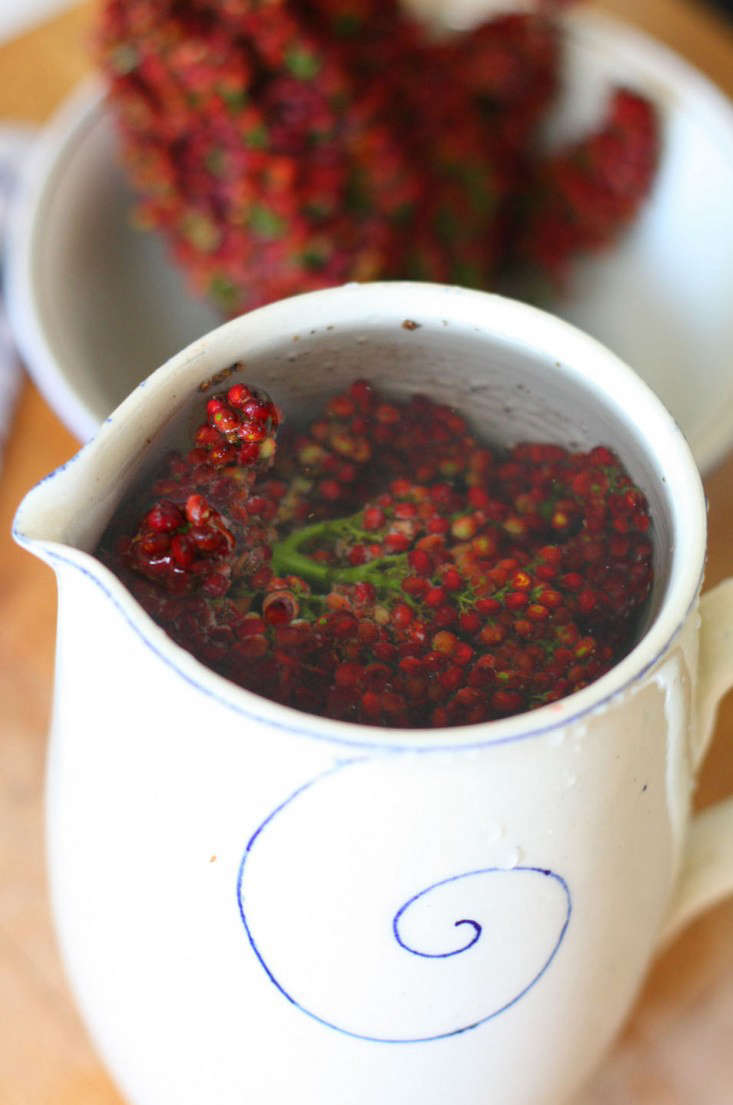We’ll be celebrating the kickoff this Friday night of our first NYC Remodelista Market at Canvas, with wild-inspired cocktails created for us by our favorite Brooklyn forager and cookbook author: Gardenista contributor Marie Viljoen.
“As a gardener, forager and cook, capturing local botanical flavors has become a passion of mine,” says Marie, the author of 66 Square Feet: A Delicious Life. “In the Northeast we have plenty of indigenous spices and herbs to work with, and making them better known is one of my—very pleasurable—missions.”
So where does a new drink begin? For The Triple Juniper, it was with Marie’s chance encounter in early March with an eastern red cedar (Juniperus virginiana) loaded with powdery blue fruit. “If you have never tasted a fresh, ripe juniper berry, you might be surprised to discover that they are sweet, followed by that vital and resiny note that is famously associated with gin,” she says. “By comparison, older store-bought berries are dull.”
Read on for DIY instructions to make The Triple Juniper at home:
Photography by Marie Viljoen.
Above: After tasting the fruit of an eastern red cedar, at home Marie used juniper in three different ways to build up layers of flavor. Freshly ground berries were mixed with sugar to edge the cocktail glasses. “The sugar is intensely perfumed, and this pure juniper is the first taste when you sip,” she says.
A juniper syrup followed, the simple syrup infused with fresh fruit. The last gin layer comes from the New York Distilling Company’s Dorothy Parker Gin.
Above: “To balance the sweetness of the syrup I needed a tart element, which came from a concentrate of summer sumac,” says Marie. She used her foraged supplies of smooth sumac (Rhus glabra) for tests, but for Friday’s Remodelista party she will be using two pounds of Tama Matsuoka Wong (Meadows and More’s) New Jersey-grown staghorn sumac (Rhus typhina) powder to make the sour mix.
“This is a riff on traditional sumac-ade where you dunk whole heads of sumac in water overnight (method in 66 Square Feet: A Delicious Life) to make a sour pink drink,” she says.
Above: Says Marie: “The Sumac Sour, our second cocktail, is rye-based, with a rim of spicebush sugar (Lindera benzoin is an understory tree native to the eastern US, and about to bloom in New York City). Freshly ground spicebush is herbal and citrusy, working well with whisky.”
Also in the mix is the first commercially produced vermouth in New York State—Atsby, along with Hollis Hills Farm maple sugar, and apricot bitters from Brooklyn-based Cecil and Merle. And sumac, of course.
The Triple Juniper
Note: You can use store-bought juniper berries and sumac (or substitute pomegranate molasses, tamarind or lemon juice for the sumac, if none is to be had).
For the syrup:
- 1 cup juniper berries, ground to a rough powder
- 4 cups water
- 4 cups sugar
Bring all the ingredients to a gentle simmer in a saucepan, stirring to dissolve the sugar. Allow to simmer for 5 minutes. Turn heat off and cool. Cover and allow to infuse overnight in the refrigerator. Strain through cheesecloth placed in a fine mesh sieve (you may have to repeat this step), bottle in a sterilized jar, and refrigerate.
For the sumac-ade concentrate:
- 1 cup powdered sumac
- 4 cups cool water
In a bowl mix both the sumac and water well and strain though cheesecloth set in a fine mesh strainer. Repeat until the dark pink liquid is no longer cloudy. Bottle in a sterilized jar and store in the fridge.
For the sugar rim:
- ¼ tablespoon ground juniper berries
- 1 cup brown sugar
- 1 lemon
Mix the juniper and sugar well and spoon onto a side plate. Cut the lemon in half and wipe the rim of your cocktail glass. Dip the wet edge of the glass gently into the spiced sugar. Allow to set for a couple of minutes before pouring the cocktail.
For the cocktail:
- 3 ounces gin
- 1 ounce juniper syrup
- 1 ounce sumac-ade concentrate
Shake up with ice and pour.
Above: A hardcover copy of 66 Square Feet: A Delicious Life is $20.86 from Amazon. See more of Marie’s recipes at DIY Recipe: Pears Roasted in Red Wine. Her New York wild foods walks begin again in April.

















Have a Question or Comment About This Post?
Join the conversation (4)